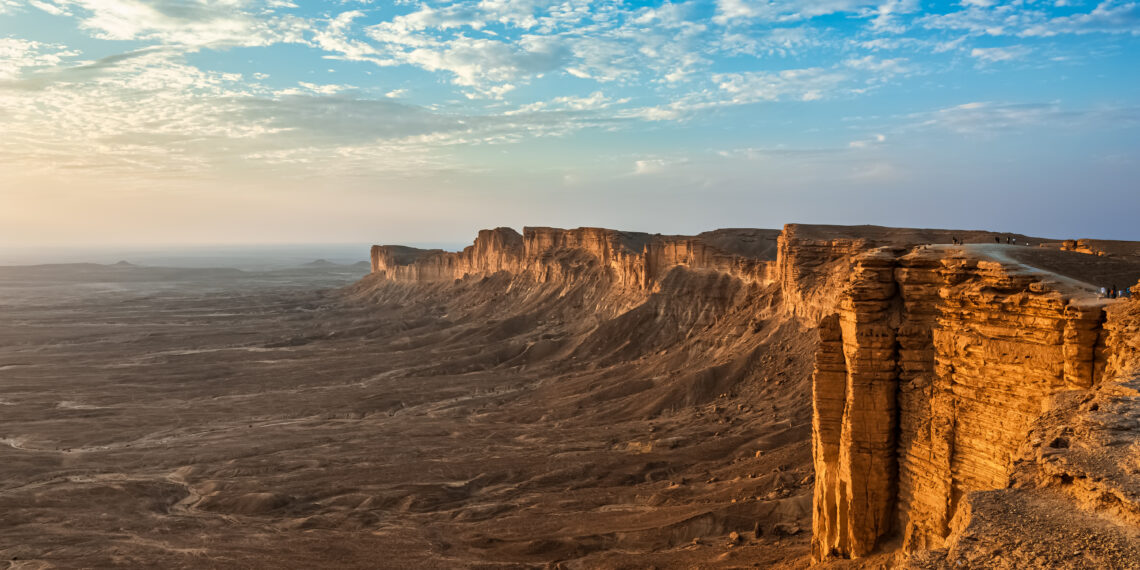The Kingdom of Saudi Arabia is best known in the resources sector as the major power in the oil industry. However, a new surge in interest and government support has forecasters tipping a mining boom for the Middle Eastern nation.
Saudi Arabia possesses more mineral resources than any other country in the Gulf region. The soil in Saudi Arabia is rich in gold, copper, phosphate, and a wide array of industrial minerals.
With some of the world’s largest reserves of phosphate and tantalum, and up to 20Moz of gold in known deposits, Saudi Arabia is becoming a significant market for mineral extraction and processing which provide manufacturing opportunities to develop high value products for the growing demand of several advanced industries such as automotive, aerospace, solar, and oil and gas.
The central and northern parts of the country contain large amounts of bauxite, in addition to deposits of silver, zinc, copper, magnesite, and kaolin. Over 40 types of mineral deposits have been identified so far in the Kingdom, with at least 15 industrial minerals with potential for extraction.
The development of the mining sector occupies a prominent position in Saudi Arabia’s programme of diversifying its economy away from oil and the government has proclaimed the mining industry as the “third pillar” of the Saudi economy after oil and petrochemicals.
The government’s mining growth strategy includes establishing industries for extracting and processing the minerals, developing the transportation infrastructure to make the minerals accessible for processing and streamlining export procedures.
The Saudi Arabian Ministry of Industry and Mineral Resources recently announced plans to seek US$32B in investments in the country’s mining and minerals sector in the short term and attract US$170B to its mining sector by 2030.
As part of the plan, the country intends to support the development of nine mining projects for midstream minerals and metals that aim to support the exportation of mineral products.
The new projects are aimed at supporting the export of mineral products to local and international markets, where the ministry is currently studying 145 applications to receive exploration licenses by foreign companies, according to Minister of Industry and Mineral Resources, Bandar bin Ibrahim Al Khorayef.
Of these projects, the biggest one is a steel plates factory being set up at an investment of over US$4B at King Salman Global Maritime Industries Complex in Ras Al Khair, while another factory is being set up for making inputs of electric vehicle batteries at a total value of US$2B in addition to a copper and zinc refinery.
Production rising
Mining production in Saudi Arabia is expected to rise 2.50% by the end of this quarter, according to Trading Economics global macro models and analysts’ expectations. In the long-term, the Saudi Arabia Mining Production is projected to trend around 2.50% in 2023, according to econometric models.
Furthermore, revenue in mining and quarrying is projected to amount to US$300B in 2022 and an annual growth rate of 10.06% is expected (CAGR 2022-2025).
KEFI on the move
Gold and copper exploration and development company KEFI (AIM: KEFI) is quickly becoming a significant new player in Saudi Arabia and recently built on its portfolio in the country with the issue of two of the three required exploration licences (Els) covering the Jibal Qutman Gold Project area through the company’s Gold and Minerals Limited (G&M) JV. G&M is owned 30% by KEFI and 70% by its partner Abdul Rahman Saad Al Rashid and Sons Ltd (ARTAR). The company reports the following:
Jibal Qutman licences
- The “Jibal Qutman North” and “Jibal Qutman Southeast” ELs have been issued on an initial five-year term, covering 174km2
- The original and outstanding Jibal Qutman EL, covering an additional 99km2 is still undergoing renewal and is expected to be granted soon
- Upon its issuance, the three contiguous licences (collectively referred to as the JQ EL) will cover a combined area of over 270km2
- A Definitive Feasibility Study (DFS) for the development is now focused on an initial production plan of c.500,000oz gold over a 10-year period, rather than the initial Preliminary Feasibility Study target of c.200,000oz gold, which was modelled on a gold price of US$1,200/oz
- The JQ EL are situated on the highly prospective “Nabitah-Tathlith” fault zone and offer additional exploration upside beyond the known 733,000oz JORC gold resource, with further gold mineralisation already documented across the JQ EL
- Field programmes for the DFS, which includes confirmation drilling, environmental baseline studies, geotechnical and metallurgical drilling, are expected to commence in October 2022 following the award of the third exploration licence
- Project development and exploration teams dedicated to this project have now been formed, with key elements currently in-country preparing to re-enter the area
- The DFS is targeted for completion at the end of Q4 2022/early Q1 2023, depending upon the timing of the grant of the outstanding EL. Environmental permits are targeted for Q1 2023
- A subsequent Mining Licence Application (MLA) is expected to be resubmitted in early 2023
- Long lead items for the proposed Jibal Qutman processing plant are being scheduled, with the longest having an 18-month period from purchase to commissioning
- Project financing in mid-2023 for Jibal Qutman is expected to be sourced and implemented within Saudi Arabia, which has well-developed international capital markets and a mandate to invest in the country’s mineral resources












